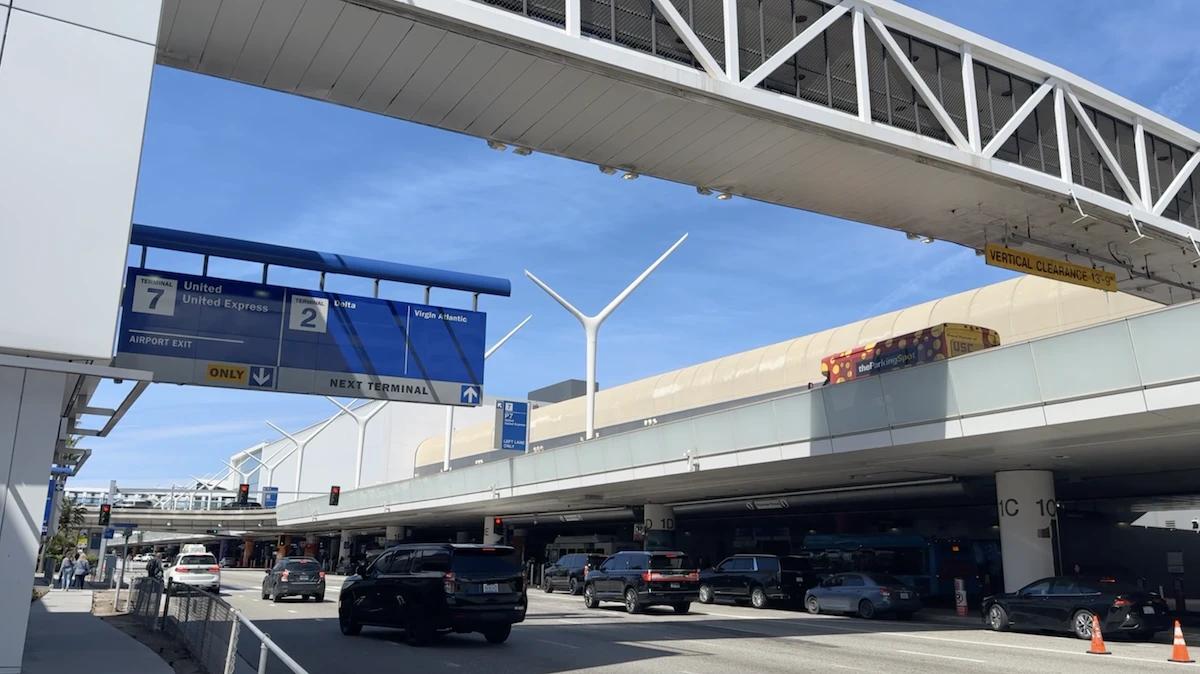LAX Airport: Navigating Air Cargo and Traffic Flow
Los Angeles International Airport (LAX) stands as a testament to the bustling activity that defines LA, serving as a major hub for both passengers and cargo. This article delves into the traffic patterns surrounding LAX, with a keen eye on the impact of air cargo transportation
LAX handles around 1,000 cargo flights on a daily basis.
LAX's Cargo Operations: A Heavyweight Contender
In 2022, Los Angeles International Airport (LAX) solidified its position as a key player in air cargo operations, managing an impressive 2,754,570 tons of cargo. Even with a slight 7.5% reduction from 2021's record-breaking volumes, these numbers significantly exceed pre-pandemic figures, highlighting LAX's indispensable role in international trade.
The airport's bustling cargo sector is powered by leading carriers like Federal Express, which alone accounted for 11.75% of the total freight, demonstrating the high stakes and vast scale of goods flowing through LAX. With major contributors like Polar Air Cargo and Atlas Air Inc, and Kalitta Air LLC dominating mail cargo, LAX is a vital node in the global logistics network.
Air Cargo Operations: The Unseen Traffic Driver
Air cargo operations at LAX contribute significantly to its traffic. LAX's cargo throughput not only showcases its logistic capabilities but also plays a pivotal role in Southern California's economic dynamism.
The trade value through LAX soared to $153.13 billion in 2022, up by 9.93% from the previous year, underscoring the airport's substantial contribution to the regional economy.
This bustling hub, ranked prominently among the nation's airports, seaports, and border crossings for its trade volume, is supported by a robust network of over 800 freight forwarders and 360 customs house brokers. This extensive community of logistics professionals ensures the smooth processing and delivery of the vast quantities of goods passing through LAX, further cementing its status as a critical distribution center, especially for Pacific Rim trade.
Impact on Road Traffic: A Closer Look
The influx of cargo vehicles, especially during peak cargo handling times at 8AM-6PM, adds a considerable volume to the surrounding roads.
Trucks at Peak Hours
Official stats indicate that cargo-related traffic(trucks) accounts for 29.7% of total vehicle flow around LAX during these hours. This a significant figure that underscores their contribution to traffic, especially during peak operational hours at LAX.
Comparative Vehicle Flows
The total number of vehicles observed was 4,081, with trucks making up 1,211 of these, indicating a heavy reliance on road freight even during different times of the day.
Highest Traffic Volumes
The midday slot (12 PM) consistently saw the highest total vehicle counts, with 736 vehicles at the first count and 703 at the second, which suggests that noon may be the busiest time for traffic around LAX.
Shuttles Presence
Shuttle numbers were low compared to cars and trucks, but their consistent presence across the time slots highlights their role in the transport ecosystem around the airport.
Morning vs. Evening Traffic
Comparing the two sets of data for 9 AM and 6 PM, there was a noticeable increase in the number of trucks from the first 9 AM count (198) to the second (186), and a similar trend is seen with the 6 PM counts (232 to 209), which could indicate a pattern in freight activity aligning with typical working hours.
Challenges at the Crossroads: Freight Forwarders and Commuters
Freight forwarders face scheduling nightmares due to unpredictable traffic, impacting delivery timelines. Commuters and travelers, on the other hand, often find themselves caught in the snarl-up, with delays during peak times.
Efforts to mitigate this congestion include specific measures, such as designated cargo processing zones and optimized traffic light sequencing. These interventions have shown promising results, reducing average delay times by [percentage] since implementation.
Innovative Solutions: The Road Ahead
LAX is actively working on multiple initiatives aimed at alleviating traffic congestion and enhancing the overall passenger experience. Key among these initiatives is the Landside Access Modernization Program (LAMP) alongside the introduction of the Automated People Mover (APM). The scope of LAMP encompasses several significant undertakings:
- APM: This is a 2.25-mile electric transit system with six stops, providing emission-free connections between the Central Terminal Area (CTA), the new LAX Economy Parking, regional light rail infrastructure, and the ConRAC facility.
- ConRAC: The creation of a unified Rent-A-Car center.
- Metro Link: A direct link to the Los Angeles Metro network.
- CTA Enhancements: Strategic upgrades to the Central Terminal Area.
As LAX continues to grow as a global hub, understanding and managing its traffic dynamics becomes crucial. Through collaborative efforts and innovative solutions, the goal is to ensure that LAX remains a symbol of efficiency, not just for passengers but for the vital cargo that passes through its gates daily.
This reasearch article was authored by Arsen Misakyan, co-founder of LAXcar, drawing from his extensive experience in private transportation and based on offical statistical data. Updated on 4/3/2024.

